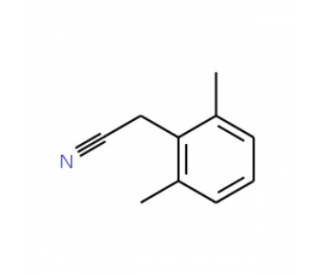详细说明
Species Reactivity
Mouse
Specificity
Detects mouse CD3 epsilon. Binds to lymphocytes from all mouse strains tested and does not react with cells from rats, rabbits, miniature swine, or hamsters. 1 Binds to the CD3 epsilon -chain present on T-lymphocyes and thymocytes. Its binding has been characterized with respect to several other monoclonal anti-CD3 antibodies. 3,4
Source
Monoclonal Hamster IgG Clone # 145-2C11
Purification
Protein A or G purified from hybridoma culture supernatant
Immunogen
H-2K b-specific mouse cytotoxic T-lymphocyte
Formulation
Lyophilized from a 0.2 μm filtered solution in PBS with Trehalose. *Small pack size (SP) is supplied as a 0.2 µm filtered solution in PBS.
Endotoxin Level
<0.10 EU per 1 μg of the antibody by the LAL method.
Label
Unconjugated
Applications
Recommended
ConcentrationSample
Flow Cytometry
2.5 µg/10 6 cells
Mouse splenocytes
Immunoprecipitation
Leo, O. et al. (1987) Proc. Natl. Acad. Sci. 84:1374.
Cell depletion
Small, M. et al. (1994) J. Immunol. Meth. 167:103.
CyTOF-reported
Fienberg, H.G. et al. (2012) Cytometry 81: 467. Ready to be labeled using established conjugation methods. No BSA or other carrier proteins that could interfere with conjugation.
T Cell Stimulation
0.1-0.6 µg/mL
See below
Please Note: Optimal dilutions should be determined by each laboratory for each application. are available in the Technical Information section on our website.
Data Examples
T Cell Stimulation | Mouse CD3 epsilon Antibody Stimulates Cell Proliferation in Mouse T Cells. Hamster Anti-Mouse CD3 epsilon Monoclonal Antibody (Catalog # MAB484) stimulates cell proliferation in mouse T cells in a dose-dependent manner, as measured by Resazurin (Catalog # ). The ED50 for this effect is typically 0.1‑0.6 μg/mL. |
Preparation and Storage
Reconstitution
Reconstitute at 0.5 mg/mL in sterile PBS.
Shipping
The product is shipped at ambient temperature. Upon receipt, store it immediately at the temperature recommended below. *Small pack size (SP) is shipped with polar packs. Upon receipt, store it immediately at -20 to -70 °C
Stability & Storage
Use a manual defrost freezer and avoid repeated freeze-thaw cycles.
12 months from date of receipt, -20 to -70 °C as supplied.
1 month, 2 to 8 °C under sterile conditions after reconstitution.
6 months, -20 to -70 °C under sterile conditions after reconstitution.
Background: CD3 epsilon
CD3 is composed of five different polypeptides ranging from 16‑28 kDa that are associated with the T cell receptor (TCR) complex and serve as its signal transducing element. The CD3/TCR complex is expressed on T cells and thymocytes. Binding of immobilized anti-CD3 can cause T cell activation that leads to any of several consequences, depending on the conditions. Activation by anti-CD3 in the presence of IL 2 has been reported to induce cell death, apparently via apoptosis. 4 The antibody can be used to induce cytolytic activity against non-specific targets and also to block TCR-mediated cytolytic killing. 1 145-2C11 has been used in a variety of studies concerned with allograft rejection and graft-vs host reaction in mice. 6, 7
References:
Leo, O. et al. (1987) Proc. Natl. Acad. Sci. USA 84:1374.
Portoles, P. et al. (1989) J. Immunol. 142:4169.
Coulie, P.G. et al. (1991) Eur. J. Immunol. 21:1703.
Ucker, D.S. J. Meyers and P.S. Obermiller. (1992) J. Immunol. 149:1583.
Small, M. et al. (1994) J. Immunol. Meth. 167:103.
Alegre, M.L. et al. (1991) J. Immunol. 146:1184.
Hendrickson, M. et al. (1995) Transplantation 60:828.
Entrez Gene IDs:
916 (Human); 12503 (Mouse)
Alternate Names:
CD3 epsilon; CD3e antigen; CD3e antigen, epsilon polypeptide (TiT3 complex); CD3e molecule, epsilon (CD3-TCR complex); CD3e; CD3-epsilon; FLJ18683; T3E; T-cell antigen receptor complex, epsilon subunit of T3; T-cell surface antigen T3/Leu-4 epsilon chain; T-cell surface glycoprotein CD3 epsilon chain; TCRE











 粤公网安备44196802000105号
粤公网安备44196802000105号